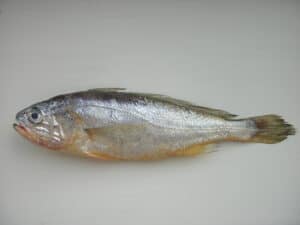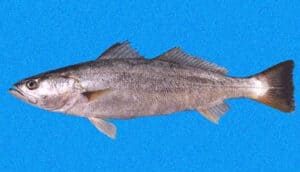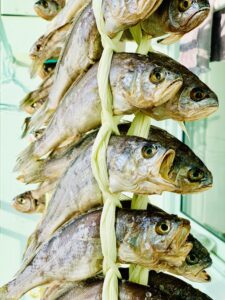What is Gulbi ?
Gulbi is a dried Yellow croaker (aka Jogi 조기) that's a delicacy in Korean cuisine.
Koreans have different names for the fresh yellow croaker which is called Jogi or Cham Jogi 참조기 and dried one which is called Gulbi.
Yellow croaker is in itself delicious, but the flavor is even more enhanced when dried, or semi-dried in the sun after being salted. After preservation, they are used in various dishes and can be steamed, fried or stewed.
They are frozen prior to selling and can be purchased in large batches. They should be defrosted prior to preparing them. One of the more common ways to cook croaker in Korea is to grill them and serve along side soup and side dishes.
This coveted Gulbi is one of Korean's favorite side dish to eat with rice. It is so popular that the stock has been almost depleted near the Korean waters (Yellow Sea and East China sea) but has since recovered globally. and has become quite expensive nowadays.
Not To Be Confused With
Jogi 조기 or Gulbi 굴비 is often called Yellow Corvina but that's incorrect. Yellow Corvina (Cynoscion phoxocephalus) aka Cachema weakfish is a different variety with a more pointed mouth and is found in Eastern Pacific, Southern Mexico to Peru seas.
Where and What To Buy
Korean or general Asian grocery stores. It's mostly in the freezer section and is often sold in a pack of 10 to 12.
How to Use/Cook
Thaw the frozen ones and grill or pan-fry with a little bit of oil. No seasoning is necessary. You can also use an air-fryer.
You should get quite a bit of oil during cooking process.
You can also hydrate the dried fish a bit and make a simple braised fish dish.
The level of saltiness may vary depending where it is made. If you find it salty, soak the dried fish in some rice water for couple hours.
How to Clean/Store
Traditionally, Gulbis were roped altogether in a set of 20 (this is called Durum 두름) and will usually be hanging outside in a cool pantry shed. In modern times, my mother-in-law for example has them hanging in her apartment veranda. As you see in the pictures below.
But these days, you will buy frozen gulbi from the stores and they should kept in the freezer and be thawed in the refrigerator overnight. Once ready to prepare, remove the fins and clean the body gently with a wet paper towel or clean cloth.









